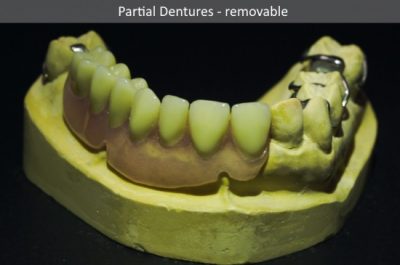Q1. What kind will I need?
Before you decide, let’s first look at these three cases:
- Replacing one or two teeth – In this case, dental bridges (or an implant bridge) are a great option. However, if the patient chooses to use dentures, then a flexible or a snap-on piece may be used instead. Flexible or snap-on fixtures are convenient and comfortable to use. It works by hugging the gum contours therefore it doesn’t bruise the gums and can last for a long time. Nevertheless, the location of the missing teeth should definitely be considered first before deciding on going for the flexible or snap-on type.
-
- Molars – Molars are teeth that are located at the lower back of the jaw. Since this area receives more chewing stress, using flexible fixtures are not advisable. Instead, a bridge should be used.
-
- Upper front teeth or bottom teeth – unlike the molars, the top front and bottom teeth do not receive much chewing stress. However, when fixing this area, aesthetic appearance is our utmost priority. That is why using partials with well-matched colors will work perfectly well in this case.
-
- One or two back molars – did you know that it isn’t necessary to replace your missing wisdom tooth? Why? It’s because even without it, a person can still have normal chewing, eating and talking ability. Even their smile won’t be affected by it. However, if two or more other back molars are affected, then that’s a different issue. In this case, it’s best to get an implant supported prosthetic. Moreover, a partial fixture may also be used.
- Replacing more than two missing teeth – in this case, it’s highly advisable to use a flexible partial or an implant supported one.
- Complete tooth replacement – if the patient would need to replace his or her entire set of teeth (upper or lower jaw or both), then a complete or a full denture is required. The full set may be flexible or implant supported. However, you should know that implant-supported types are more expensive. Take this into consideration before you make a decision.
Q2. Which type of partials is the best?
Partial sets are recommended to patients who need to replace one or two missing teeth. If the missing teeth are molars, then it’s highly advisable to use implants because they can support more chewing stress, prevent bone loss, would cause less eating limitations; and of course would look and feel natural just like normal teeth.
A flexible partial or an implant denture can be used to replace teeth in the frontal part of the jaw. Molars are not included. Keep in mind that implants require sufficient healthy bone on the affected area for it to be used. The reason for this is that the implants would be supported directly by the patient’s jaw bone, similar to a normal root. In addition, implants would take at least three to six months for it to develop its peak strength.
Q3. Why should they be soaked in water?
Traditional artificial teeth that are made from acrylic should be stored (soaked) in water, or a special soaking solution when not worn. This will prevent the acrylic from drying and warping up. Keep in mind that warped ones will NOT fit well, therefore making it practically unusable. Inside the mouth, the prosthetic are moistenend by the wearer’s saliva. However, when it’s removed (especially at night), it must be soaked in water to keep it hydrated.
Q4. How are they supposed to fit?
They are supported by the closest teeth to which it’s attached using metal clasps or snaps. Flexible partials have invisible fine plastic tentacles instead of clasps. Complete or full denture sets rely on the suction between the wet gum and the inner surface. The patient’s palate may also be used as a suction surface for an upper complete set. However, if they no longer fit perfectly, an adhesive may be used as a temporary solution, while your new replacements are being prepared.
Q5. Overbite
For patients who are suffering from underbite, crossbite and overbite, false teeth may be used to correct any minor bite issues. However, they have a slight disadvantage. Over a period of time, using these frequently may result to a bite fault. Nevertheless, if this happens, our expert dentist will surely diagnose the reason and provide a suitable solution to correct the problem.
Q6. When are they recommended?
There are many reasons why a person may lose one or two teeth. This includes poor oral hygiene, disease or an accident. If a tooth must be extracted, it is highly advisable to get a replacement to restore the patient’s overall dental health. A bridge is typically used to replace one or two missing teeth. However, if you’re missing more than two, then this option would be highly suitable. In general, it’s always best to consult your dentist first.
Q7. Why do they hurt?
In the first few days, your new teeth will cause pain because of the extracted teeth and sore gums. Don’t worry because your gums will eventually heal. In addition, your new set may also cause uneasiness since you still need to adjust and get used to wearing them. Moreover, it will hurt whenever there is a shortage of saliva in the patient’s mouth, or if they no longer fit you properly. If they get damaged or cracked, they will also cause pain, in the same way as a warped prosthetic would. Furthermore, these may also develop slight fitting problems over time as the jawbone shrinks. Nevertheless, it’s always best to consult your dentist as soon as you feel any slight pain and discomfort.

![]() Call Us : (214) 308-5359
Call Us : (214) 308-5359 


